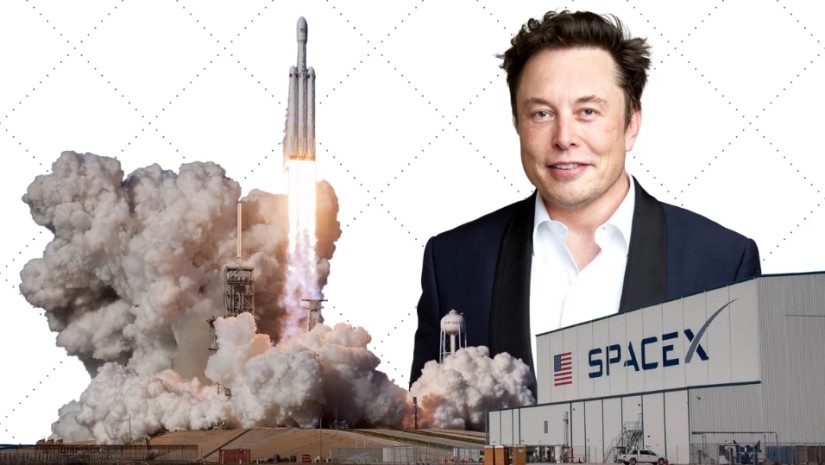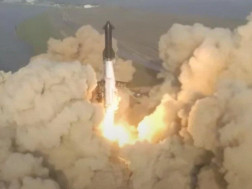SpaceX launched the third test flight of its Starship rocket on Thursday and reached space, as the company pushed development of the mammoth vehicle past new milestones.
Elon Musk’s company launched Starship at about 9:25 a.m. ET from its Starbase facility near Boca Chica, Texas.
The rocket flew further than previous tests, with the flight lasting about an hour before Starship broke up above the Indian Ocean. The company noted that the vehicle did not splash down in the water, which was the intended ending of the flight.
“We have lost Ship 28,” Dan Huot, communications manager at SpaceX, said on the company’s webcast.
The flight represents a significant step toward SpaceX completing prototype testing and beginning operational Starship launches.
Musk congratulated his company in a post shortly after the launch, announcing that “Starship reached orbital velocity!”
NASA chief Bill Nelson also congratulated SpaceX “on a successful test flight!”
“Starship has soared into the heavens. Together, we are making great strides through Artemis to return humanity to the Moon—then look onward to Mars,” Nelson, NASA’s administrator, wrote in a post on social media.
SpaceX has flown the full Starship rocket system on two tests in the past year, with launches in April and November. Both previous launches had progressive but explosive results: While each of the rockets flew for a few minutes, with the most recent reaching space, both vehicles were ultimately destroyed due to problems.
The Federal Aviation Administration on Wednesday cleared SpaceX for a third launch attempt.
The Starship system is designed to be fully reusable and aims to become a new method of flying cargo and people beyond Earth. The rocket is also critical to NASA’s plan to return astronauts to the moon. SpaceX won a multibillion-dollar contract from the agency to use Starship as a crewed lunar lander as part of NASA’s Artemis moon program.
SpaceX heavily emphasizes an approach of building “on what we’ve learned from previous flights” in its approach to develop Starship. The company says its strategy focuses on “recursive improvement” to the rocket, where even test flights with fiery outcomes represent progress toward its goal of a fully reusable rocket that can deliver people to the moon and Mars.
Musk last year said he expected the company to spend about $2 billion on Starship development in 2023.
Starship is both the tallest and most powerful rocket ever launched. Fully stacked on the Super Heavy booster, Starship stands 397 feet tall and is about 30 feet in diameter.
The Super Heavy booster, which stands 232 feet tall, is what begins the rocket’s journey to space. At its base are 33 Raptor engines, which together produce 16.7 million pounds of thrust – about double the 8.8 million pounds of thrust of NASA’s Space Launch System rocket, which launched for the first time late last year.
Starship itself, at 165 feet tall, has six Raptor engines – three for use while in the Earth’s atmosphere and three for operating in the vacuum of space.
The rocket is powered by liquid oxygen and liquid methane. The full system requires more than 10 million pounds of propellant for launch.
Goals for third flight
There were no people on board Starship for the flight test. The company’s leadership has previously emphasized that SpaceX expects to fly hundreds of Starship missions before the rocket launches with any crew.
SpaceX far surpassed the nearly eight-minute flight of the second launch and completed further milestones.
The company tested several new capabilities on this flight. Those included opening and closing the door of the spacecraft once in space – which would be how the rocket deploys payloads such as a satellites on future missions – and transferring fuel during the flight in a NASA demonstration, SpaceX confirmed. It did not perform a planned demonstration of relighting Starship’s engines while in space.
Source: CNBC
















